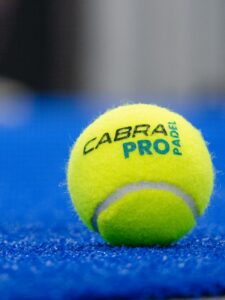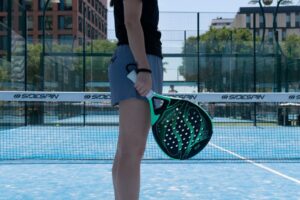From Love to Advantage: Decoding Padel Terminology
3 min read
From Love to Advantage: Decoding Padel Terminology
If you are a fan of padel, you already know how fun and exciting this sport can be. With its unique combination of tennis, squash, and badminton, playing padel is a great way to hone your skills and stay fit. But if you are new to the game, you might feel overwhelmed by the different terms and jargon used by players and coaches. Do not worry, in this article, we will demystify the most common padel terminology to help you better understand the game and enjoy it even more.
The Basics
Before diving into the more intricate terms, it is best to start with the basics. For starters, padel is always played in doubles, with each team occupying one side of a rectangular court separated by a net. To start a game, a coin toss decides which team will serve first. The scoring system is somewhat similar to tennis, with games played up to six points and sets won by winning two games with a margin of two points.
The Terminology
Now that we have covered the basics let’s move on to some of the most common padel terms:
1. Love
In padel, love means zero points. When a player has zero points, they are said to have “love.”
2. Advantage
When a game reaches a deuce (when both teams have 40 points) and one team wins a point, they are said to have the advantage. If the team loses the next point, the score returns to deuce.
3. Smash
A smash is a move where a player hits the ball with great force from above their head into their opponent’s court, usually with the intention of winning the point.
4. Volley
A volley is a term used to describe a shot where the player hits the ball before it bounces off the ground.
5. Lob
A lob is a shot where a player softly hits the ball up high over their opponents and lands it in the back of the court.
6. Bandeja
Bandeja is a move where the goal is to block the other team’s smash with a high backhand volley that is hit from shoulder height.
7. Chiquita
A chiquita is essentially the opposite of a bandeja. Instead, it is a forehand shot where the player hits the ball low on the wall with underspin to force it to bounce off the back wall and land in their opponent’s court.
8. Vibora
The vibora is a “snake-like” shot that involves using the wrist to hit the ball diagonally across the court and usually played from behind the body.
9. Cucharita
Lastly, the cucharita is a gentle shot often used to return a difficult ball. It’s like a light scoop shot played with the paddle cupped.
Conclusion
By now, you should have a better understanding of some of the essential padel terminology. Learning more about these terms will help you to better follow the game and appreciate the skills of the players. If you are new to the sport, keep in mind that there are many more terms you can learn as you progress, but the most important thing is to have fun and enjoy the game.







